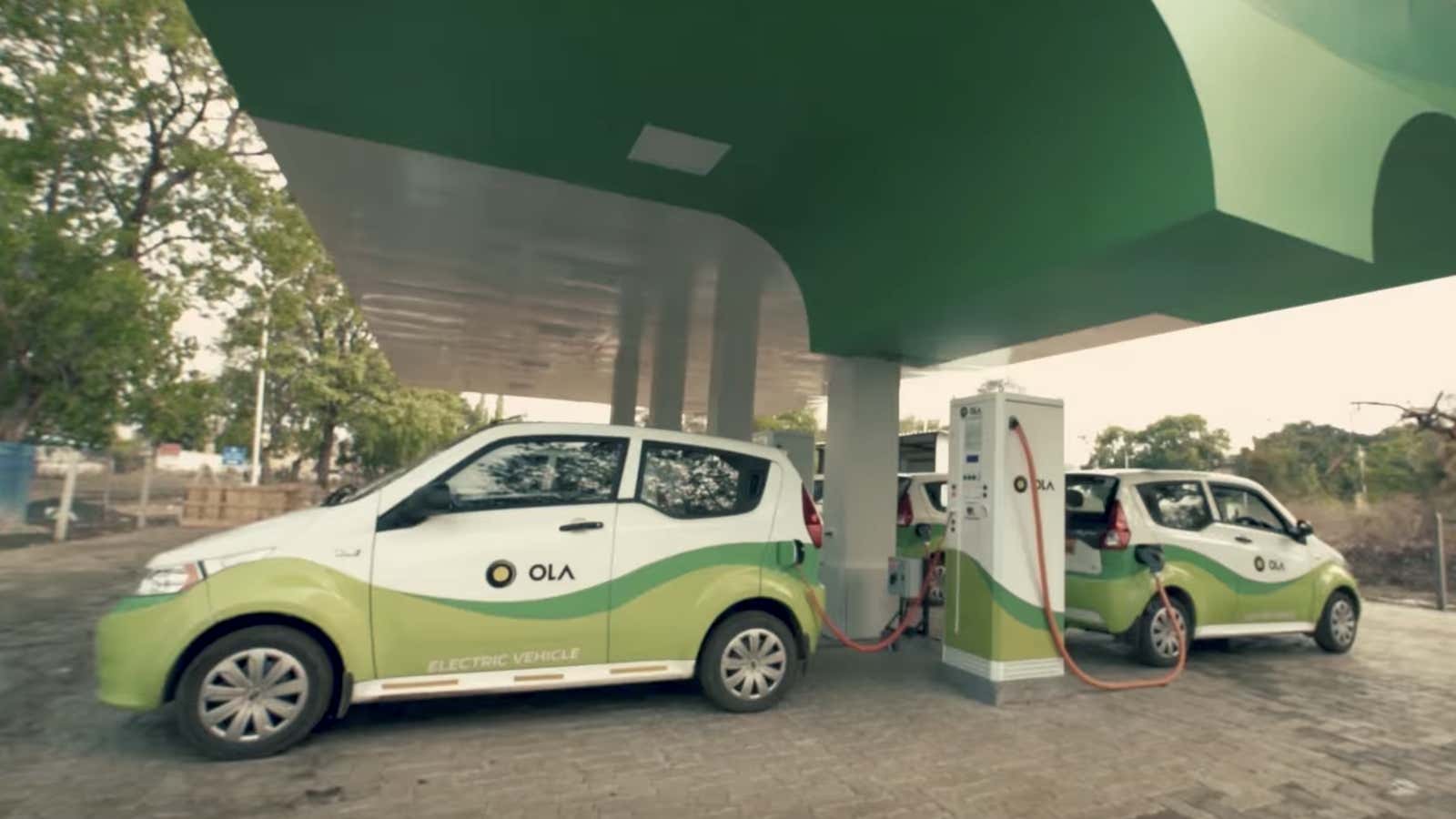India’s electric vehicle (EV) market just received a massive boost.
Yesterday (July 2), Japanese investing behemoth Softbank, pumped a whopping Rs1,725 crore ($250 million) into Ola Electric Mobility (OEM), the independent electric vehicle business of ride-hailing app Ola, data from market intelligence platform Tofler show.
Ola founder Bhavish Aggarwal announced the fund raising in a tweet, sharing a photo with Masayoshi Son, the founder and CEO of Softbank, which is also the largest shareholder in Ola.
With the latest funding, OEM is now worth over $1 billion, an unnamed source told the Financial Express. This makes it the sixth entrant into India’s coveted unicorn club this year.
“Given the focus on EVs globally and in India, this doesn’t come as a surprise. (Ride hailing apps) Uber and Didi are doing something similar in their core geographies. The Indian government’s focus, almost a diktat, that ride-sharing should transition to EV to achieve adoption targets is well known and these initiatives are part of it,” Yugal Joshi, vice-president at Texas-based consultancy Everest Group, told Quartz.
Only two months ago, Ratan Tata, the chairman emeritus of Tata Sons, had put his stamp of approval on Ola’s EV efforts by investing an undisclosed amount in OEM. Kia Motors, an arm of the south Korean firm Hyundai Motors, is also pumping in $300 million into the company. Earlier, in March, Tiger Global and Matrix India participated in a series A funding round with a Rs400 crore investment.
This mounting investor interest in the EV ecosystem is promising, experts say.
A large transportation company like Ola is the right player to usher in the EV era, according to Zishaan Hayath, founder of ed-tech platform Toppr and an early angel investor in Ola. Especially since, in India, cabs are expected to go electric before private cars do, he added.
🦄 Riding into the future
OEM has been working towards its stated mission of bringing one million EVs on Indian roads by 2022. In May 2017, it ran pilots in Nagpur. It has also been dabbling with battery swapping stations, and electric two- and three-wheeler services, among other things. OEM also shared its plans of setting up an advanced technology centre with over 150 engineers in San Francisco’s Bay Area, in a June 13 press release.
The entire ecosystem is “nearing a point of inflexion,” according to Sanchit Vir Gogia, founder of advisory firm Greyhound Research.
Power distribution company BSES recently introduced public charging stations in Delhi where slots can be reserved via an app. The southern state of Kerala opened its first charging station late last month. In India’s most populous state, Uttar Pradesh, the government plans to set up an undisclosed number of charging stations in eight major cities and seven intra-state and inter-state highways and expressways.
There are aiding policy initiatives, too.
Last week, the government said it may slash the existing 12% goods and services tax (GST) on EVs to 5%. The tax levied on lithium-ion batteries used in EVs was cut last year from 28% to 18%.
There is a movement towards green fuel across the world, said Vidhya Shankar, head of corporate development at the IT services company Ninestars Technologies. “This is a great opportunity for Ola Electric to own the entire platform of e-vehicles—buying, leasing, distributing, servicing and recharging (in India),” Shankar said, adding that the Softbank backing is “bound to be a huge impetus for the sector as a whole.”
Yet, these are early days.
Roadblocks persist
It’s going to be a bumpy ride for OEM, and others, who are looking to scale up their operations.
“The limited or inadequate availability of charging stations, coupled with the lack of adequate financial schemes for the growth of such infrastructure, hinders the adoption of electric cars by customers,” according to consulting firm Prescient and Strategic Intelligence. “In addition, the technological challenges such as limited electric range and long charging time are also expected to affect the adoption of electric cars in the country.”
The Indian government’s goal to make all vehicles on the road electric by 2030 still seems a distant dream. Consumers will need more convincing to loosen their purse strings and adopt the more expensive EVs.
“Electric four-wheelers in the west, though more expensive than fossil fuel-driven cars, are solving a very first world problem of ‘how can I have a more ecologically friendly car?'” said Hayath. “In India, the driving factor is the economics. People will go for the cheaper car.”
